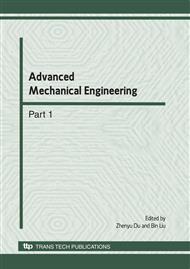p.303
p.310
p.315
p.320
p.326
p.330
p.334
p.340
p.347
Application of Supporting Vector Regression Model on Simultaneous Determination of Benzoic Acid and Salicylic Acid
Abstract:
Support vector machine (SVM) is based on the principle of structural risk minimization, which makes SVM has better generalization ability than other traditional learning machines that are based on the learning principle of empirical risk minimization.Research on the application of Support vector regression (SVR) model in spectrophotometry was done to determine the content of benzoic acid and salicylic acid simultaneously. The predicted result was found highly correlated with the time when the data was collected to build the model. The closer of the dates between collecting data for modeling and for predicting, the better the predicted results. SVR model with significantly improved robustness was resulted by using all the collected data over time, which, when applied to the determination of benzoic acid and salicylic acid simultaneously, led to satisfactory result, with recoveries being 97%-102%.
Info:
Periodical:
Pages:
326-329
Citation:
Online since:
June 2010
Authors:
Price:
Сopyright:
© 2010 Trans Tech Publications Ltd. All Rights Reserved
Share:
Citation:


